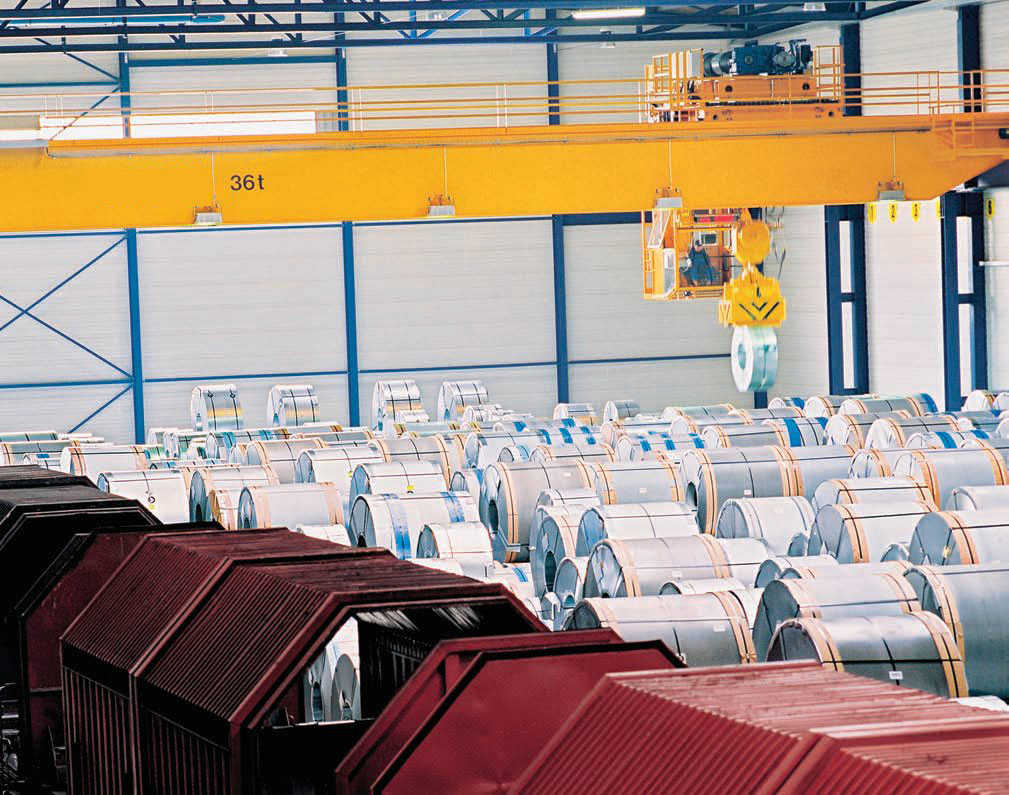Provide equipment refurbishment services for old customers?
In the past 30 years, we have designed and manufactured customized cranes for many steel coil mills. In addition to providing customers with maintenance spare parts, we have never taken over the crane refurbishment business. I happened to come across a crane refurbishment case recently. We analyzed the refurbishment process of this case and analyzed what work needs to be done between the crane supplier and the customer.
The process of refurbishment of four process cranes
The cranes have served a steel coil store at its location in Germany, for 16 years.
Besides storing steel coils that are delivered to them by a shuttle, the cranes, which operate on two parallel runways, ensure that coils are staged in time for further transport by truck or rail.
The double-girder overhead travelling cranes, which are manually controlled from a cab, have a load capacity of 36t. The four cranes handle some 2.7m tonnes of steel every year.
After a detailed review by experts from the crane company, a set of measures was developed for the crane installation. A 35m long crane bridge will be replaced with a higher load rating (H3 B5). The end carriage will be replaced by an angular bearing end carriage and a frequency converter powered drive.
New crane electrical equipment will also be installed including the control system, which now meets the requirements of DIN 13849-1 Performance Class d and Safety Category 3.
The magnet equipment, the crabs with their 36t open winch units (MPW), the control cabs and the crane lights of the existing cranes will be kept and installed on the new crane bridges.

What we learned from this case
Renovating a set of overhead cranes and purchasing a new set of overhead crane equipment are two distinct options, each with its own advantages and disadvantages.
Renovating the existing cranes:
Pros:
- Cost savings: Renovating the existing cranes can be significantly less expensive than purchasing new equipment.
- Environmental friendliness: Renovating the existing cranes helps reduce the environmental impact of scrapping the old equipment.
- Reduced downtime: The existing cranes may already be installed and operational, reducing the downtime required for installation and commissioning.
Cons:
- Limited lifespan: The renovation may only extend the lifespan of the cranes for a limited period of time.
- High maintenance costs: The older equipment may require more frequent maintenance and repairs, which can be expensive.
- Limited upgrade options: The renovation may not allow for all the features and upgrades available with new equipment.
Purchasing new overhead crane equipment:
Pros:
- Upgraded features: Purchasing new equipment may offer more advanced features and technologies than the existing cranes.
- Longer lifespan: New equipment is designed for a longer lifespan and may require less maintenance.
- Improved efficiency: New equipment may offer improved efficiency in terms of lifting capacity, speed, and precision.
Cons:
- Costlier upfront investment: Purchasing new equipment typically requires a higher upfront investment.
- Installation and commissioning: The installation and commissioning of new equipment may require downtime.
- Environmental impact: Disposing of the existing cranes can have environmental impacts.
In conclusion, the option of renovating the existing overhead cranes or purchasing new equipment depends on specific circumstances and requirements. If cost is a significant factor, renovating the existing cranes may be more suitable. However, if efficiency and advanced features are essential, purchasing new equipment may be the better option. It is important to consider all the factors involved, including the lifespan, maintenance costs, upgrade options, and specific operational needs to make an informed decision.
